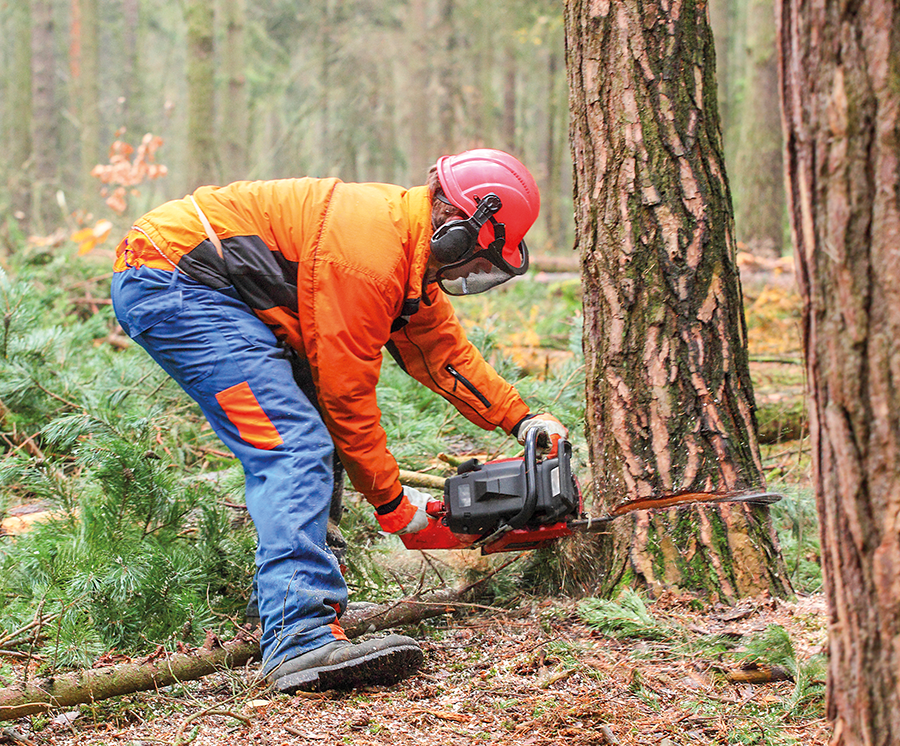Who’s responsible for managing health and safety in forestry?
13th January 2024
When we think about high-risk industries, construction is usually the first that comes to mind. Forestry and agriculture are often overlooked. However, they are among the most high-risk industries in the UK when it comes to health and safety. Gavin Scarr-Hall, director of health & safety at Peninsula, offers some advice.

Forestry work is difficult. It is generally outdoors in all kinds of weathers, meaning workers are exposed to the elements all year round. The ground is not even or always stable, posing additional danger for workers who are often handling heavy machinery or large vehicles, which incur their own electrical and mechanical hazards.
On top of that, trees and earth can be deadly if they’re not lifted, handled, felled, or excavated carefully and methodically.
Planning, managing, and coordinating forest operations is complex because the risk profile is rarely simple and straightforward. Responsibility for health and safety in such a complex working environment extends from ground workers right up to chief executives of management companies, forestry organisations, and even landowners.
Some roles carry significantly more responsibilities than others. However, health and safety is never a one-man job. Managing forestry safety relies on interdependence between all levels of an organisation. Essentially, there are five key roles:
The landowner
This could be the estate owner, a farmer, or even a local authority. Landowners need to coordinate all activities in the overall forest environment and appoint competent advisors and specialists who can ensure all workers’ safety is protected as much as reasonably possible.
Forestry works manager (FWM)
This is sometimes the landowner themselves, but often the FWM is appointed to carry out duties on their behalf and commission works on a forestry site. FWMs prepare outline risk assessments for site works, select competent contractors, and liaise between them and the landowners. They’re also responsible for arrangements to report incidents and unsafe practices, and for specifying control measures on site.
Contractor
A contractor is brought in on a consultancy basis to provide forestry services, such as felling trees or groundworks. Contractors usually work with the FWM to ensure that safety standards are set and maintained correctly. They will select any subcontractors necessary, supervise and manage employees, and carry out site-specific risk assessments.
Subcontractor
Anyone engaged by a contractor other than by direct employment is a subcontractor. All subcontractors cooperate with site safety rules and manage their own team of employees.
They will report any incidents or unsafe practices that occur on site and are also responsible for carrying out site-specific risk assessments and supervising workers.
Worker
Workers in the forestry industry are expected to take care of their own health and safety as well as that of those who could be affected by their work.
They cooperate with site safety rules and agree not to interfere with, or misuse, any equipment or processes that have been provided for their health, safety, and welfare.
They must follow all training provided and report any incidents or unsafe practices to the contractor or their employer.
Cooperation is key. Everyone plays a part in managing forestry health and safety. Successful management requires coordination of activities and communication of information. By planning in advance and identifying risks, appropriate resources can be allocated, and competent persons assigned to key tasks.
Functions of a particular role can be delegated to an individual, but they cannot take on the legal responsibilities that go with the role. Discussion and cooperation are essential, as is understanding how one role supports another’s to carry out theirs.
Everyone on the team plays a part in managing health and safety across the forestry industry.
Read more farm business news here


